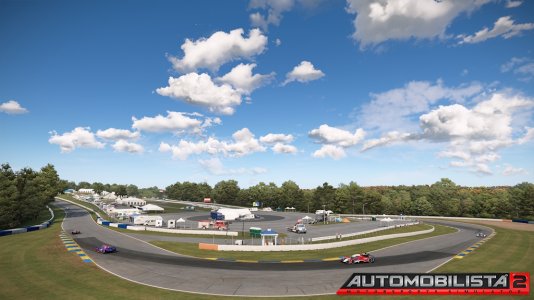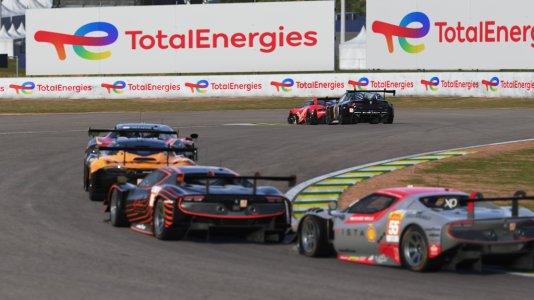This is a continuation from the Rennsport thread, so that the moderators don't get further annoyed about thread drift. Here's the original thread:
The iRacing physics discussion started from page 7 and by the end centred on exploits of unrealistic brake bias in the Dallara P217 by top-level drivers in the IMSA iRacing Series. It's not a private conversation between MD11 and me, so feel free to contribute, anyone who is interested.
@MadDriver11 wrote: "There is no need to fill your mouths with big telemetry screens where you apparently ready only what you want and ignore what you don't like"
Do you apply the same standard to yourself? It appears you completely ignored my telemetry because it doesn't align with your own opinion. Did you even look at it properly? I've shown to you telemetry indicating that at least one iRacing car does not have the fundamental problem with combined lateral and longitudinal grip that you claim.
But progress has been made. You've now given some definite SWA numbers, as opposed to "almost zero" in sim or "they actually turn the steering wheel" in RL (both clear examples of hyperbole). I have something to compare in RL (45 deg going into the chicane) and the sim (Morad etc never reach 20 deg) for the Mulsanne chicanes. So thanks for that and the RL video link. I will go study them.
How about more generally at Le Mans or is this only a problem at the chicanes? If there was the fundamental problem you claim, it would be visible in major corners also, would it not? Have you got SWA numbers for some of them, or is that work I have to do?
Also, you didn't answer my question. What do you regard as a reasonable brake bias range in RL for a Dallara P217 driven at Le Mans? IIRC you have a degree in automotive engineering, so surely this is a question you can easily answer? Do you agree with Jackson's opinion: "53-56% as far as I know" - thanks for the reply @mclarenf1papa and I see that's a substantial difference to what we currently see the sim drivers exploiting, so good to have this highlighted.
As I said in my post in the Rennsport thread, this seems more likely to indicate that iRacing have a dynamic balance problem, rather than a problem with grip/force combining. I pointed to a previous example of this in iRacing in that thread, so perhaps the problem is still there?
The iRacing physics discussion started from page 7 and by the end centred on exploits of unrealistic brake bias in the Dallara P217 by top-level drivers in the IMSA iRacing Series. It's not a private conversation between MD11 and me, so feel free to contribute, anyone who is interested.
@MadDriver11 wrote: "There is no need to fill your mouths with big telemetry screens where you apparently ready only what you want and ignore what you don't like"
Do you apply the same standard to yourself? It appears you completely ignored my telemetry because it doesn't align with your own opinion. Did you even look at it properly? I've shown to you telemetry indicating that at least one iRacing car does not have the fundamental problem with combined lateral and longitudinal grip that you claim.
But progress has been made. You've now given some definite SWA numbers, as opposed to "almost zero" in sim or "they actually turn the steering wheel" in RL (both clear examples of hyperbole). I have something to compare in RL (45 deg going into the chicane) and the sim (Morad etc never reach 20 deg) for the Mulsanne chicanes. So thanks for that and the RL video link. I will go study them.
How about more generally at Le Mans or is this only a problem at the chicanes? If there was the fundamental problem you claim, it would be visible in major corners also, would it not? Have you got SWA numbers for some of them, or is that work I have to do?
Also, you didn't answer my question. What do you regard as a reasonable brake bias range in RL for a Dallara P217 driven at Le Mans? IIRC you have a degree in automotive engineering, so surely this is a question you can easily answer? Do you agree with Jackson's opinion: "53-56% as far as I know" - thanks for the reply @mclarenf1papa and I see that's a substantial difference to what we currently see the sim drivers exploiting, so good to have this highlighted.
As I said in my post in the Rennsport thread, this seems more likely to indicate that iRacing have a dynamic balance problem, rather than a problem with grip/force combining. I pointed to a previous example of this in iRacing in that thread, so perhaps the problem is still there?










